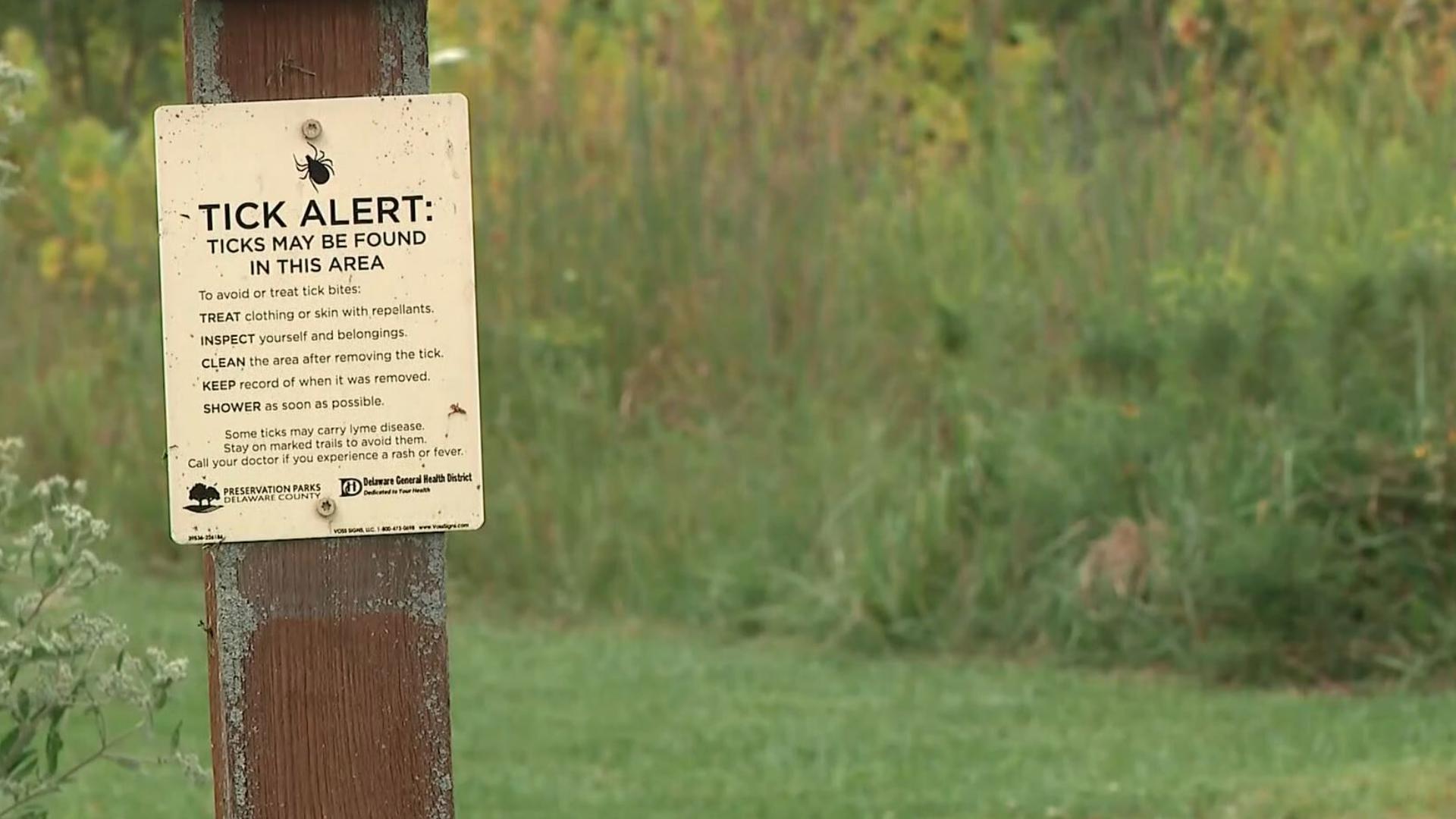OHIO, USA — As the weather gets warmer, the Ohio Department of Natural Resources is warning about the dangers of ticks, how to avoid getting bitten and symptoms to watch for.
Data from the Ohio Department of Health shows an average of 262 Ohioans get Lyme disease from ticks every year, but there are ways to lessen the risk.
There are about a dozen species of ticks that have been identified in Ohio. Three species, including the American dog tick, the blacklegged tick and the lone star tick, are the ones most likely to be encountered by humans and pets.
Ticks are most commonly found in areas with tall grass, brush and trees.
According to ODNR, there are several measures that can decrease your chances of getting bitten by a harmful tick:
- Know when and where to expect ticks. (Blacklegged ticks are found in the woods; dog ticks are in grassy areas and road edges.)
- Use repellents according to labels
- Tuck your pants into your socks and boots and tuck your shirt into your pants
- Check yourself, family and pets regularly and remove ticks immediately
- Use anti-tick products on pets
- Lyme vaccines for pets where black-legged ticks are found
For easy tick removal, use fine-tipped tweezers to grab the tick as close to the skin’s surface as possible. Then, pull away from your skin with even, steady pressure and wash your hands and the affected area.
If bitten, keep an eye out for common symptoms such as a bull's eye rash that usually begins at the site of the tick bite, headache, fever, chills, muscle pain and fatigue.
For more information on tick bite prevention, click here.

